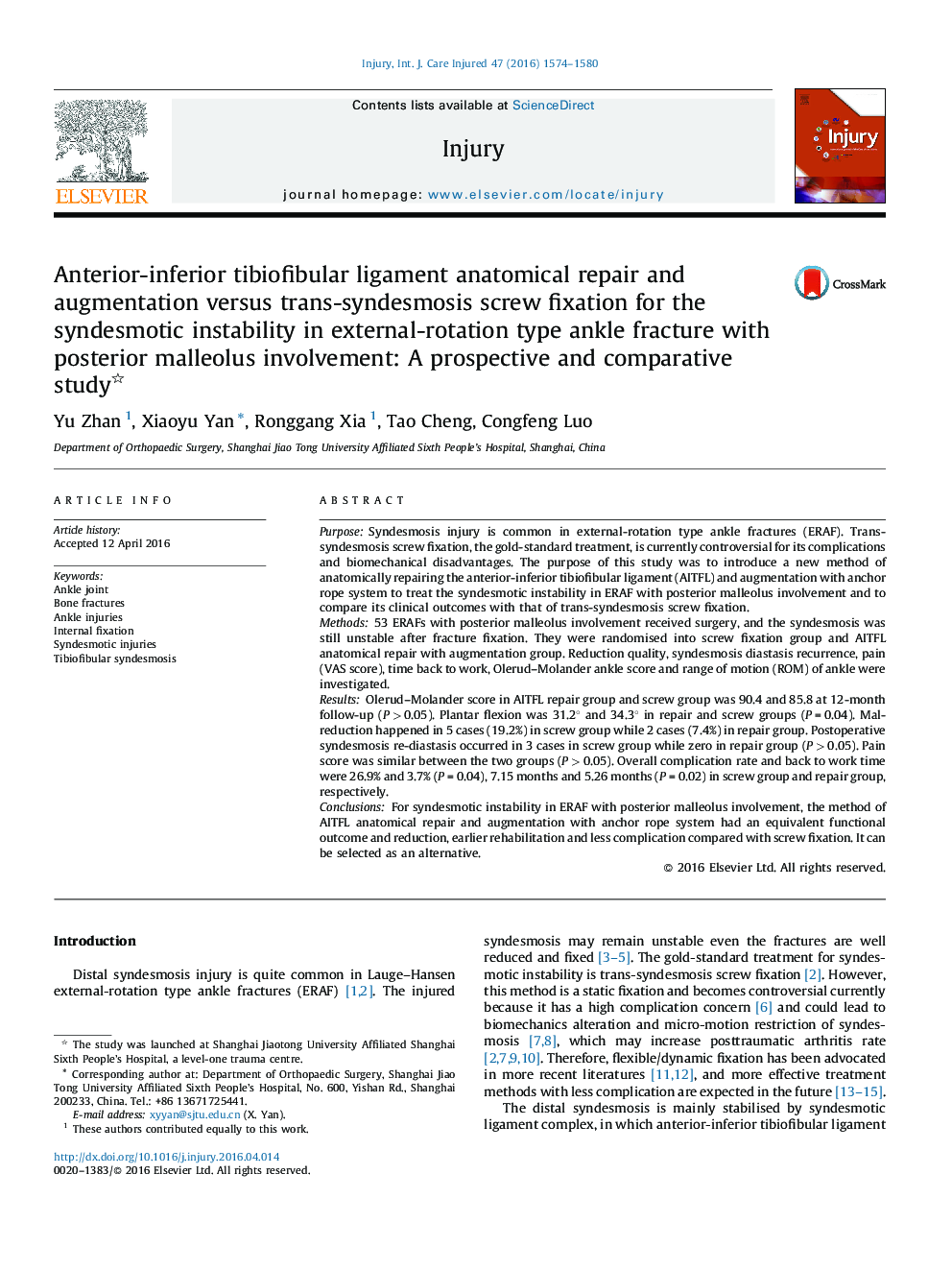| کد مقاله | کد نشریه | سال انتشار | مقاله انگلیسی | نسخه تمام متن |
|---|---|---|---|---|
| 6082780 | 1205971 | 2016 | 7 صفحه PDF | دانلود رایگان |
PurposeSyndesmosis injury is common in external-rotation type ankle fractures (ERAF). Trans-syndesmosis screw fixation, the gold-standard treatment, is currently controversial for its complications and biomechanical disadvantages. The purpose of this study was to introduce a new method of anatomically repairing the anterior-inferior tibiofibular ligament (AITFL) and augmentation with anchor rope system to treat the syndesmotic instability in ERAF with posterior malleolus involvement and to compare its clinical outcomes with that of trans-syndesmosis screw fixation.Methods53 ERAFs with posterior malleolus involvement received surgery, and the syndesmosis was still unstable after fracture fixation. They were randomised into screw fixation group and AITFL anatomical repair with augmentation group. Reduction quality, syndesmosis diastasis recurrence, pain (VAS score), time back to work, Olerud-Molander ankle score and range of motion (ROM) of ankle were investigated.ResultsOlerud-Molander score in AITFL repair group and screw group was 90.4 and 85.8 at 12-month follow-up (P > 0.05). Plantar flexion was 31.2° and 34.3° in repair and screw groups (P = 0.04). Mal-reduction happened in 5 cases (19.2%) in screw group while 2 cases (7.4%) in repair group. Postoperative syndesmosis re-diastasis occurred in 3 cases in screw group while zero in repair group (P > 0.05). Pain score was similar between the two groups (P > 0.05). Overall complication rate and back to work time were 26.9% and 3.7% (P = 0.04), 7.15 months and 5.26 months (P = 0.02) in screw group and repair group, respectively.ConclusionsFor syndesmotic instability in ERAF with posterior malleolus involvement, the method of AITFL anatomical repair and augmentation with anchor rope system had an equivalent functional outcome and reduction, earlier rehabilitation and less complication compared with screw fixation. It can be selected as an alternative.
Journal: Injury - Volume 47, Issue 7, July 2016, Pages 1574-1580
